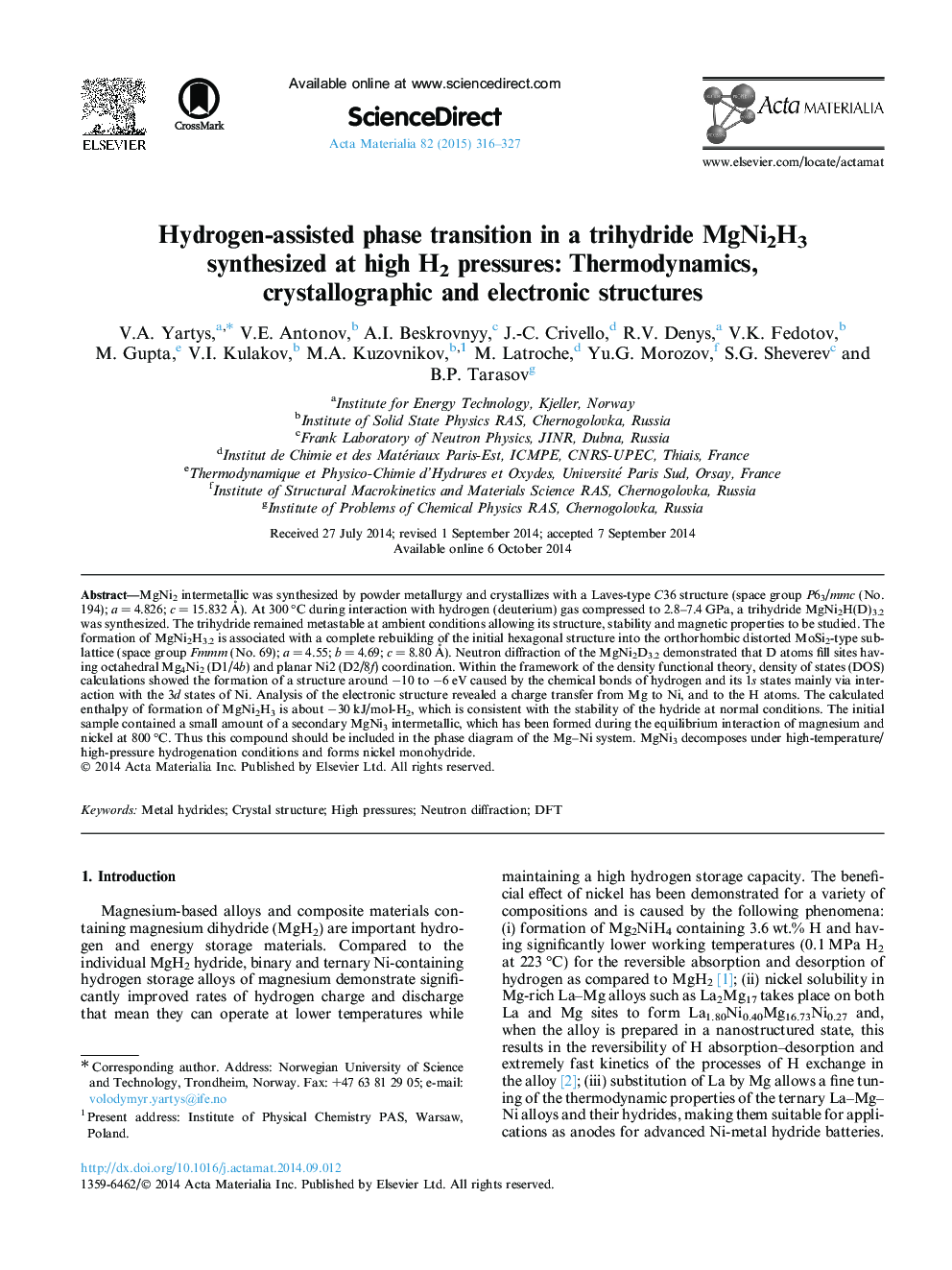| کد مقاله | کد نشریه | سال انتشار | مقاله انگلیسی | نسخه تمام متن |
|---|---|---|---|---|
| 1445526 | 1509594 | 2015 | 12 صفحه PDF | دانلود رایگان |

MgNi2 intermetallic was synthesized by powder metallurgy and crystallizes with a Laves-type C36 structure (space group P63/mmc (No. 194); a = 4.826; c = 15.832 Å). At 300 °C during interaction with hydrogen (deuterium) gas compressed to 2.8–7.4 GPa, a trihydride MgNi2H(D)3.2 was synthesized. The trihydride remained metastable at ambient conditions allowing its structure, stability and magnetic properties to be studied. The formation of MgNi2H3.2 is associated with a complete rebuilding of the initial hexagonal structure into the orthorhombic distorted MoSi2-type sublattice (space group Fmmm (No. 69); a = 4.55; b = 4.69; c = 8.80 Å). Neutron diffraction of the MgNi2D3.2 demonstrated that D atoms fill sites having octahedral Mg4Ni2 (D1/4b) and planar Ni2 (D2/8f) coordination. Within the framework of the density functional theory, density of states (DOS) calculations showed the formation of a structure around −10 to −6 eV caused by the chemical bonds of hydrogen and its 1s states mainly via interaction with the 3d states of Ni. Analysis of the electronic structure revealed a charge transfer from Mg to Ni, and to the H atoms. The calculated enthalpy of formation of MgNi2H3 is about −30 kJ/mol-H2, which is consistent with the stability of the hydride at normal conditions. The initial sample contained a small amount of a secondary MgNi3 intermetallic, which has been formed during the equilibrium interaction of magnesium and nickel at 800 °C. Thus this compound should be included in the phase diagram of the Mg–Ni system. MgNi3 decomposes under high-temperature/high-pressure hydrogenation conditions and forms nickel monohydride.
Journal: Acta Materialia - Volume 82, 1 January 2015, Pages 316–327